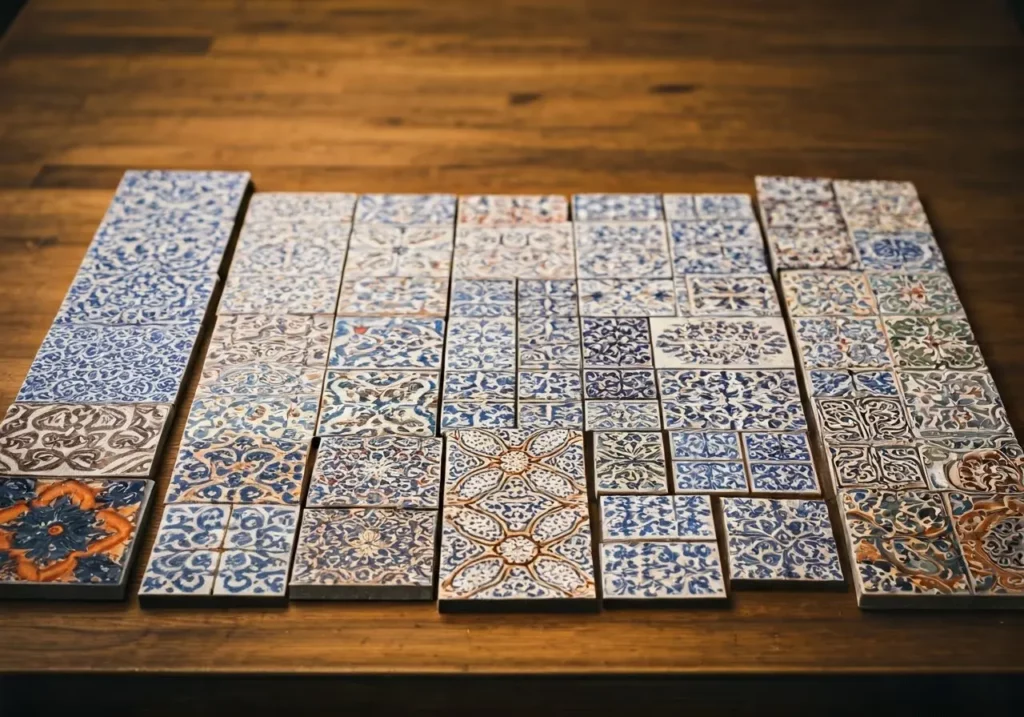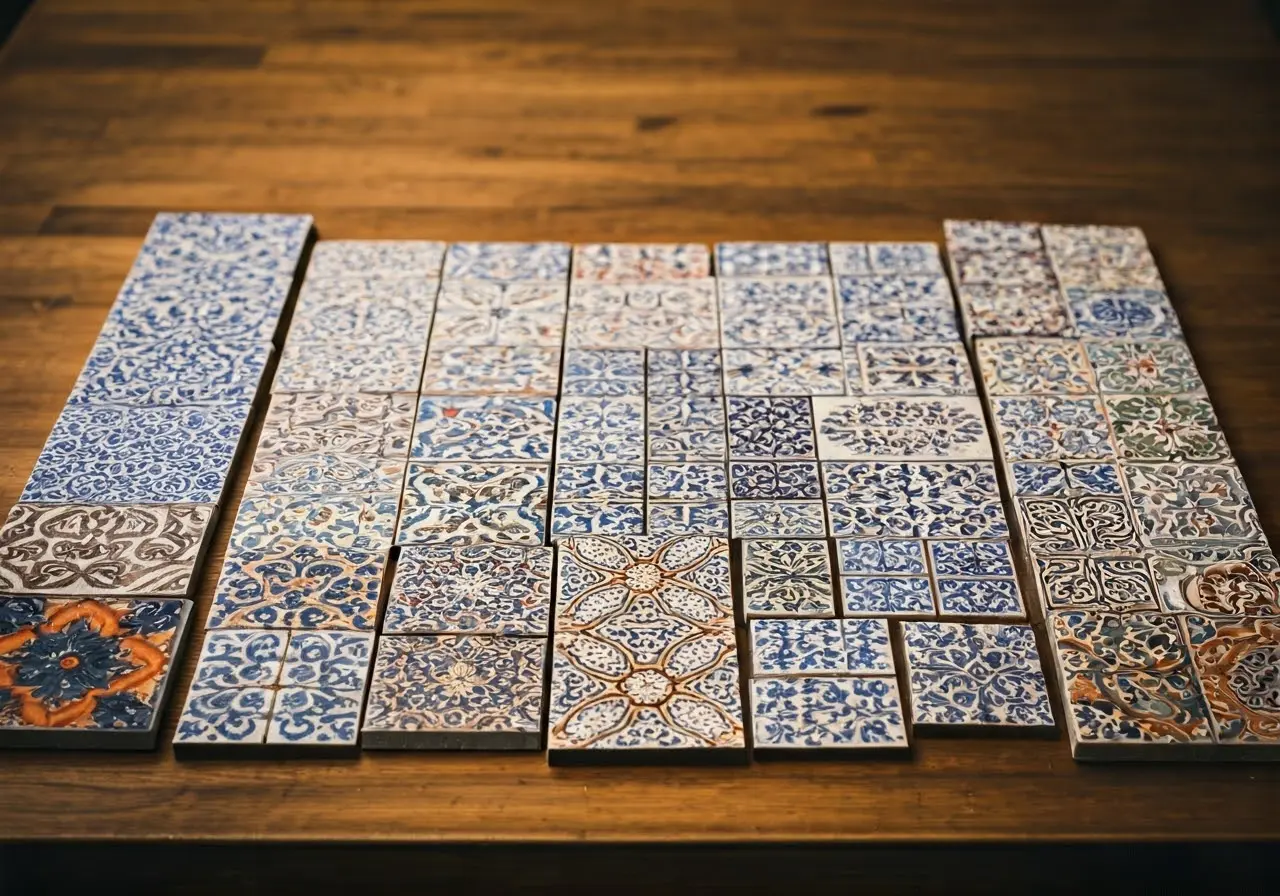Sourcing tiles for your home or project can be an exciting yet daunting task. With so many options available, it’s easy to become overwhelmed. Whether you’re renovating a kitchen or designing a new bathroom, understanding the potential challenges can help you make more informed decisions. In this blog, we’ll explore some of the most common hurdles you might face when sourcing tiles and offer some practical advice on how to overcome them.
Identifying the Right Style
The sheer variety of tile styles can be overwhelming. From materials like ceramic and porcelain to patterns and colors, finding the right match for your space is key. It’s important to consider the overall aesthetic you’re aiming for and how the tiles will complement the rest of your decor.
One effective approach to narrowing down your style options is to start with a vision board. Compile images and samples of the elements you want to incorporate into your space. This visual guide can help you identify a common theme or color palette, making it easier to choose tiles that fit well with your vision. Remember, tiles are not just functional; they’re a statement of style and personality.
Exploring design inspirations online can provide creative insights. Websites like Pinterest and design magazines often showcase the latest trends, from minimalist layouts to bold, colorful patterns. Visiting tile showrooms in person also offers a tactile experience where you can see and feel the tiles, helping you visualize how they’ll look in your space. Don’t hesitate to ask for samples to take home. Placing a sample in the actual lighting conditions of your room can reveal how the tile’s color and texture will appear in real life.
Budget Constraints
Budgeting is a significant concern when it comes to tile sourcing. High-quality tiles can be expensive, and hidden costs such as shipping and installation can add up. Setting a realistic budget and prioritizing your spending can help you manage costs more effectively.
To make the most of your budget, consider purchasing tiles during sales or from discount outlets. Also, mix and match premium tiles with more affordable options to create a balanced look without overspending. Keep an open mind to different suppliers, as prices may vary significantly between them.
Another consideration is factoring in long-term costs. While a cheaper tile may seem attractive initially, its lack of durability might lead to costly repairs or replacements down the line. Balancing upfront costs with long-term value is crucial in making economical decisions without compromising on quality.
Ensuring Quality and Durability
When sourcing tiles, quality and durability should never be compromised. Inferior tiles might save you money upfront, but they could lead to more expenses in the long run due to repairs and replacements. Investing in quality tiles ensures longevity and less maintenance.
Checking for accreditations and certifications from tile manufacturers can assure you of the quality you’re getting. Look for tiles that meet industry standards for strength and resistance. These standards can indicate a product’s performance in high-traffic areas or wet environments like bathrooms and kitchens.
Additionally, reading reviews and testimonials can provide insights into the experiences of other customers. Positive reviews about a tile’s durability and the manufacturer’s customer service can offer peace of mind before making a purchase.
Availability and Supply Issues
Supply chain disruptions can affect tile availability, leading to delays in your project. It’s crucial to plan ahead and have contingency options. Establishing a good relationship with suppliers can also provide more security in your sourcing efforts.
Communicating with suppliers about stock levels and lead times can prevent setbacks. Consider asking suppliers for notifications on restocks or exploring alternate sources for similar products. Relying on local suppliers can also reduce the risk of international shipping delays and lower overall costs.
In the current market, it’s wise to order tiles well before your project starts. This allows you to address any unforeseen supply issues without affecting your renovation timeline. Involving a project manager in these discussions can help streamline communications and ensure your project’s progress remains on track.
Environmental and Ethical Considerations
As sustainability becomes increasingly important, choosing eco-friendly tiles is a consideration many face. Ensure that your tiles are sourced responsibly and check if they are recyclable or made from sustainable materials, aligning your project with your values.
Look for tiles made from recycled materials or that have low environmental impacts. Certifications like LEED can indicate environmentally friendly products. Additionally, some manufacturers prioritize energy-efficient production processes, which can further reduce your project’s carbon footprint.
Ensuring ethical sourcing not only benefits the environment but also supports social responsibility efforts. Valuing products from companies that treat workers fairly and maintain ethical practices is an important aspect of today’s consumer choices.
Wrapping Up the Challenges in Tile Sourcing
Navigating the world of tile sourcing doesn’t have to be a stressful experience. By understanding the common challenges, from budget constraints to style decisions, you can plan better and make choices that align with your vision. Keep these insights in mind, and you’ll be well on your way to finding the perfect tiles for your project.


